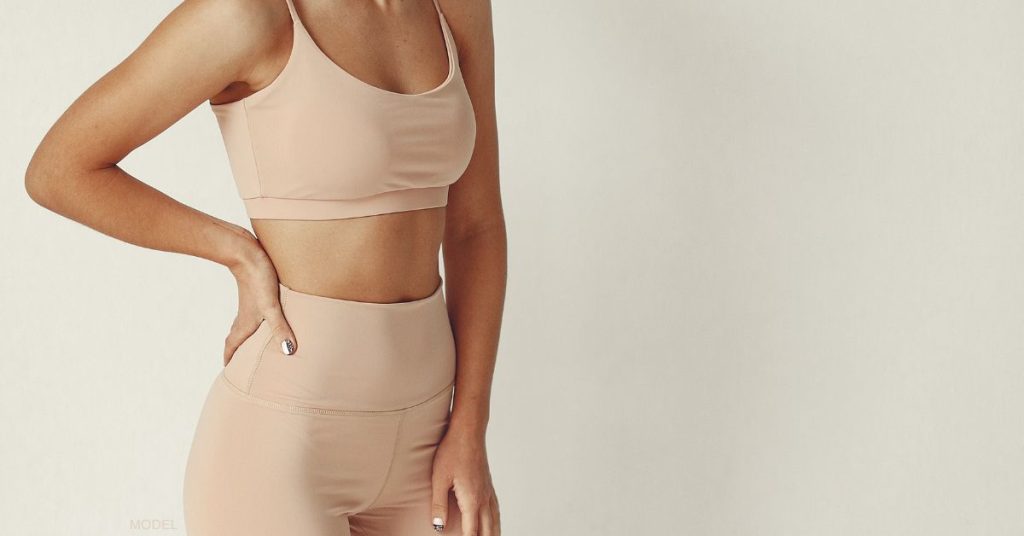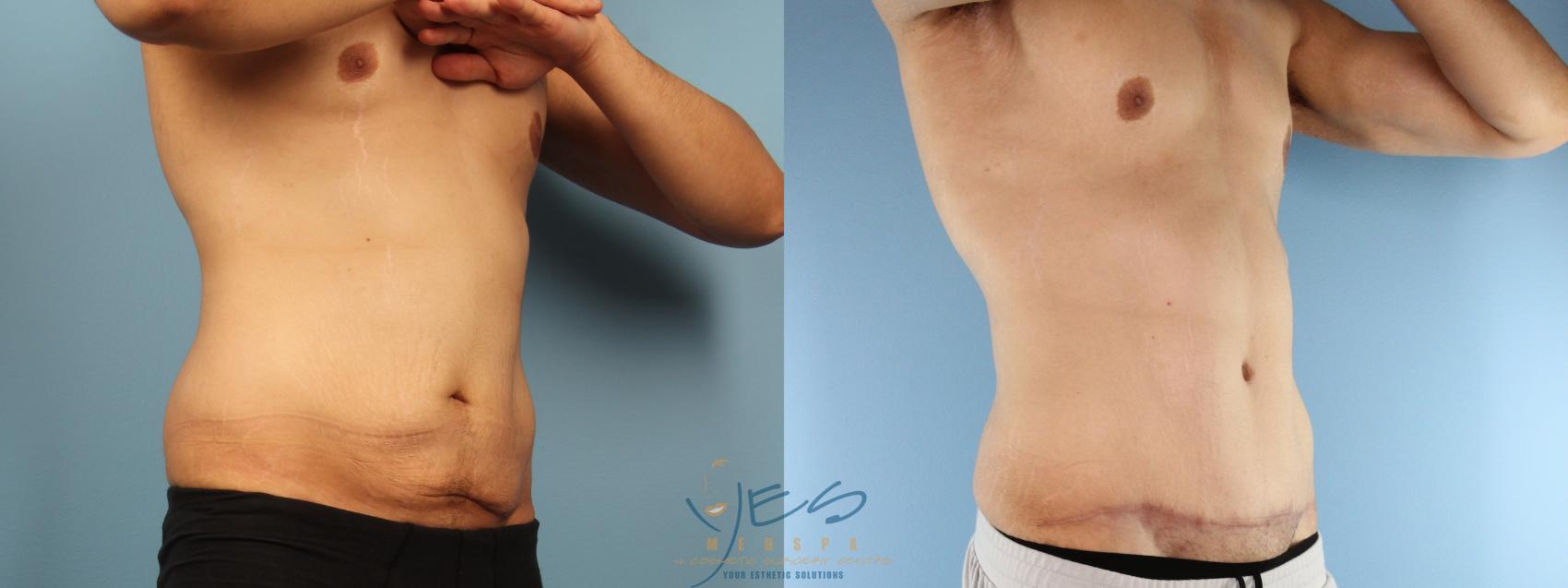Most tummy tuck patients understand that scarring is the tradeoff for having a flatter abdominal area—and the confidence boost that follows. It’s still important to know what to expect if you’re wondering what your tummy tuck scar will look like after this transformative body contouring surgery.
The appearance of all scars evolve with time. Tummy tuck scars after 5 years bear little resemblance to how they appear after 6 months or a year after surgery, especially if you follow your surgeon’s post-op incision care instructions. Even though the scars are permanent, a skilled plastic surgeon will try to place your incisions where they can be concealed in every day clothes, even with low-cut swimsuits or underwear.
In this post, we’ll describe the incisions made for different types of tummy tucks, how to improve the appearance of your tummy tuck scars and about the services offered at YES Medspa to further reduce the appearance of surgical scars.
Different Types of Tummy Tuck Incisions
The length and location of your incision depend on your body’s anatomy, skin laxity and overall shape. There are 3 generalized ‘types’ of Tummy Tuck procedures:
Mini tummy tuck
A mini Tummy Tuck has a horizontal incision that is generally shorter than what’s needed for a standard/full tummy tuck. A Mini tummy tuck only addresses loose skin below the belly button. Any abdominal wall weakness, rounded shape and/or skin above the belly button is not effected. The incision length is determined by the degree of skin laxity on your lower abdomen. You may be a good candidate for a mini tummy tuck if have no muscle separation (diastasis recti) and your skin laxity concerns are isolated to the area below the belly button.
Traditional tummy tuck
A standard (aka traditional or complete) tummy tuck involves making a horizontal incision from one hip to the other. This procedure can address excess or loose skin as well as tighten and repair diastasis recti (abdominal wall separation). Your plastic surgeon will place the incision as low as your anatomy will allow so that you can cover the scar with clothes or bikini bottoms. You will also have a small incision around your belly button as the skin is pulled down and repositioned around the umbilicus. If you have a longer torso, and/or your skin laxity is less severe, your incision may not reach as low as your ‘pant line”. In some cases you may also have a small vertical scar to your midline as the old belly button ‘hole’ is closed up.
Extended tummy tuck
An extended tummy tuck is similar to a traditional/standard tummy tuck, however with this procedure the scar extended. The horizontal incision for an extended tummy tuck curves around the sides of your torso or flanks. In some cases, the scar can wrap partially around to your back. The length of your tummy tuck scar is based on your anatomy and severity of skin laxity. To get an idea of how long your scar will be, we suggest bending over in a ‘diving’ position and marking where your skin starts to fall away from your torso. At your consultation your plastic surgeon will take the time to show you where the scar will be placed on your body.
An extended tummy tuck also involves an incision around your belly button. As your abdomen is contoured and tightened, the excess skin pulled down and then cut away. As a result, a new opening for your belly button (the umbilical stalk) is created. Your plastic surgeon then sculpts a new belly button opening that looks natural. Unnatural navels you might see after a tummy tuck are a skinny “coin slot” slits or large, rounded or stretched belly buttons. The belly button’s appearance is one thing to look for in tummy tuck before and after photos to assess your surgeon’s skill. You can browse our gallery of tummy tuck before and after photos here.
Minimizing Your Tummy Tuck Scars
There are a variety of ways that you can help your incision heal after a tummy tuck, which can reduce the appearance of scars. Before starting any new ‘scar fading’ technique, we recommend following your surgeon’s instructions first and asking them for advise before starting something new.
You will want to avoid heavy lifting, strenuous exercise, sexual activity, and stretching until you get the all-clear to do these activities (usually 6 to 8 weeks after the procedure).
You can also apply topical treatments to help fade scars. These include:
- Scar cream: such as Skin Medica Scar recovery gel or CytoDerma
- Silicone gel sheets
- SPF to protect against UV exposure
Maintaining a healthy lifestyle, wearing supporting garments, avoiding products and clothing that can irritate the skin while it heals, and using gentle skin products are other ways to minimize scars.
YES Medspa Scar Treatments
If you’re self-conscious about your scar’s appearance, you might want to consider nonsurgical scar revision at YES Medspa. Resurfacing treatments such as the Icon™ 1540 non-ablative fractional laser or Morpheus8 radiofrequency microneedling can be used to lighten pigment and smooth and tighten the texture of your scars by creating micro-channels of controlled injury to stimulate new collagen production. These treatments require mild topical numbing and can cause 2-3 days of swelling to the treatment area.
Intense Pulsed light therapy (aka: Photofacials/ IPL) are designed to reduce vascularity and lift pigment. If your scar is more red in colour, a series of IPL treatments might be best to improve your scars. Treatments are quick, require no topical numbing and has minimal downtime.
Schedule Your Consultation Today
If you’re considering tummy tuck surgery or want to discuss options for reducing the appearance of a tummy tuck scar, request a consultation using the online form or call us at (604) 888-9378 to schedule an appointment.












Leave a Reply